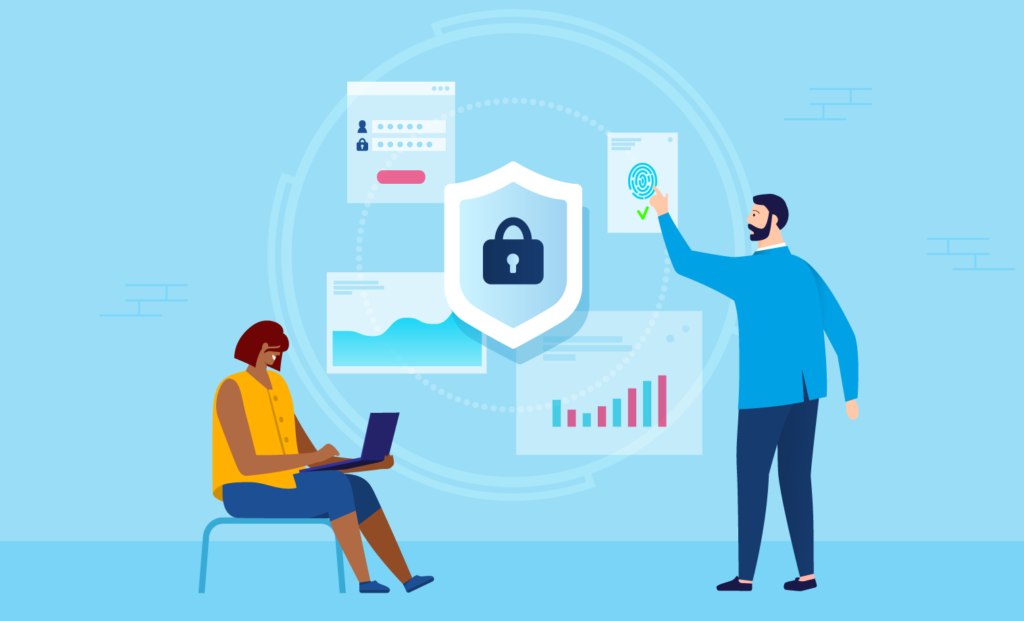Is the Future of Data Security in the Cloud Is Programmable?

Is the Future of Data Security in the Cloud Is Programmable? Let’s See How!
It goes without saying that afterthought security and privacy leads to numerous problems, vulnerabilities, complexities off security products requiring customization.

Security breach does not transpire in isolation, it is a series of events that involve several stakeholders to make a system – or a compromised system. All the stakeholders or you may refer to them as components, all involved components have a role to play with the wide-ranging consequences. The organization, despite being the fulcrum of this system is often hostage to vulnerable third-party dependencies.
It could be anything or anyone from a software application to its deployment or from the company’s CEO, security team to developers. Any lapse on anyone’s parts renders the whole organizational infrastructure vulnerable in the cloud.
So why then it seems likely that the future of data security in the cloud is programmable? Let’s go over the following scenarios and work our way to the solution.
For instance, company ‘A’ – cloud-based organization – decided to take in new software that it believes will proffer increased innovation in the products or services. A would need its IT, security, and compliance teams for the implementation of this decision since the new software require customization and assimilation in its cloud environment.
These teams will work in coordination to deploy and secure the new software which will also include a number of third party products application for the purpose of securing the accessibility control. Despite A’s all the predetermined measures on the implementation of security and privacy by design, the new addition effectively renders each taken step by the security an afterthought.
Complexities and Vulnerability
It goes without saying that afterthought security and privacy leads to numerous problems, vulnerabilities, complexities off security products requiring customization. The customization enables the tandem functionality of products with the software they intend to protect. The configurational and maintenance cost of the security products rises in direct proportion to the size and complexity of the software.
What makes the software vulnerable is the lack of compatibility, gaps, and coordinated communication with security products. Which is natural given that the software and products are different systems that are meant for unalike spaces of infrastructure. The more the vulnerability, the more security products software will be needed which inevitably will lead to further more complexities.
On average the security products in medium to large-sized businesses range between 50 and 100. This count, due to inadequate governance leads to uncountable open vulnerabilities courtesy of patchwork.
DevOps Integration From Development to IT Operation
The software development processes have changed into encompassing the reliability, scalability, and performance of the software due to the outlook improvising of a developer. Prior to the normalization of the DevOps as well as cloud infrastructure, software development contained input/output method or basic operating system creation along with problem-solving programming paradigms.
Today, however the increasing demand for security of software has proffered developers to integrate DevOps approach in order to break from the dreaded cycle of the complexities and vulnerabilities by partaking into the security, privacy, and compliance aspects of the overall system.
The process makes use of the highly advanced tools that are deployed in the assembly line of an application for the purpose of code vulnerability assessment. This analysis informs the developer in order to rectify the weakness that can lead to insecure configuration and operational flaw which invariably leads to a security patch, before the release. The developer certifications such as, Microsoft azure developer training are providing expert level knowledge which is required to develop solutions embedded with infrastructure as a service implementation like Azure IaaS services and Azure storage services.
It is exceedingly important for seniors as well as aspiring progressive developers to have an in-depth knowledge of tools like Log Analytics and Application Insights for a better understanding of the cloud-native applications that are rapidly positioning themselves as pivotal into the cloud future.
The secure coding and tool availability rendered possible by the integration of DevOps teams is enabling developers to develop software that is equipped to provide security & compliance visibility along with data flow control. This modus operandi based on tools is not an afterthought security measure, if anything, it is preemptive in nature. When the software efficacy is delivered with security, the complexities originated from security products carried in by IT become irrelevant. This also serves to eliminate the vulnerability that arises from software and security product incompatibility.
It goes to show that programmable model powered software is developed to be deployed as microservices with embedded tools (service packages) have capabilities to manage data in perfect synchronization with varying security and compliance requirement of elastic infrastructures. This means that through the flexibility of DevOps processes the security, as well as governance of data, is now programmed in during the development processes.
Cloud-Native Programmability
Cloud-native programmability enables applications capable of ensuring absolute security and compliance in a cloud environment. They can provide screening of data accessibility, data management and governance, and customized protection including the developers that develop these applications. All of it together paves way for the portability of the application.
Despite the widely common reservations regarding cloud infrastructure in terms of security and compliance, the business organizations from retail, manufacturing, entertainment, to technology companies themselves especially the software domain, seek to assimilate economics and flexibility of it. The cloud-native abilities of applications that allow development teams to integrate futuristic tools that are basically enabling the optimized control of data.
Independent of the application deployment location, organizations now are empowered to decide the most optimal infrastructure according to their own IT preferences in terms of performance, reliability, scalability, cost, etc., for the application. Today, the security and compliance optimization has made the vastly varied cloud options available for businesses that range from platform-as-a-service (PaaS) to server-less infrastructures that are not dependent on IT for the architectural stack maintenance.
This prism brings the future implications of programmable data security and a number of economic benefits from a clear perspective. It will further enable the cloud and IT services providers to assist organizations in order to improve their cloud presence on the basis of service delivery instead of its security. Although, the economic benefit has been touched upon yet the very beginning of it will come from cost-effectiveness that will stem from security products along with deployment consolidation.
Source: https://dzone.com/articles/is-the-future-of-data-security-in-the-cloud-is-pro






